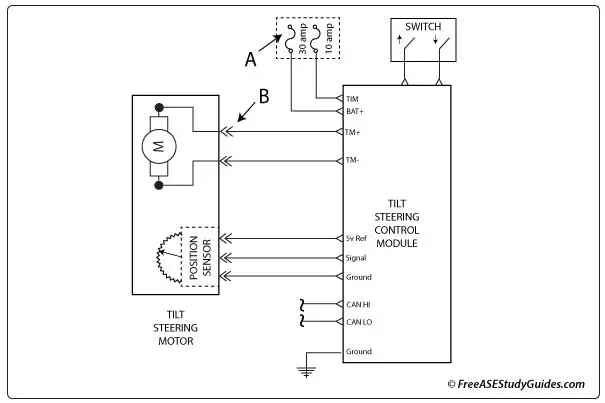ASE A4 Steering Suspension Practice Test

6. Technician A says an open at point A will cause an inoperative steering column tilt function. Technician B says resistance at point B will cause the tilt function to operate slowly. Who is correct?
- A. Technician A
- B. Technician B
- C. Both A and B
- D. Neither A or B
7. Technician A says electro-hydraulic power steering systems have an electric pump to create hydraulic fluid pressure. Technician B says EPS electric power steering uses an electric motor to assist steering. Who is correct?
- A. Technician A
- B. Technician B
- C. Both A and B
- D. Neither A or B
8. Two technicians are discussing inner and outer tie rods. Technician A says to turn the outer tie rod end to adjust the toe setting. Technician B says loose inner tie rod ends cause feathered tire wear. Who is correct?
- A. Technician A
- B. Technician B
- C. Both A and B
- D. Neither A or B
9. The left rear tire of a vehicle with independent rear suspension is worn on the inside tread. Which of the following is MOST likely causing this wear?
- A. The toe angle.
- B. Underinflated tires.
- C. The caster.
- D. None of the above.
10. Technician A says SAI or Steering Axis Inclination is adjusted by changing the caster angle. Technician B says camber adjustments are included in the Included Angle. Who is correct?
- A. Technician A
- B. Technician B
- C. Both A and B
- D. Neither A or B